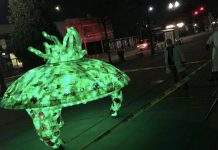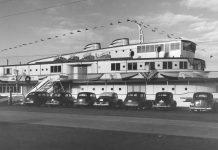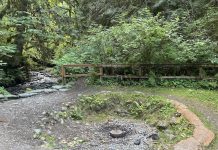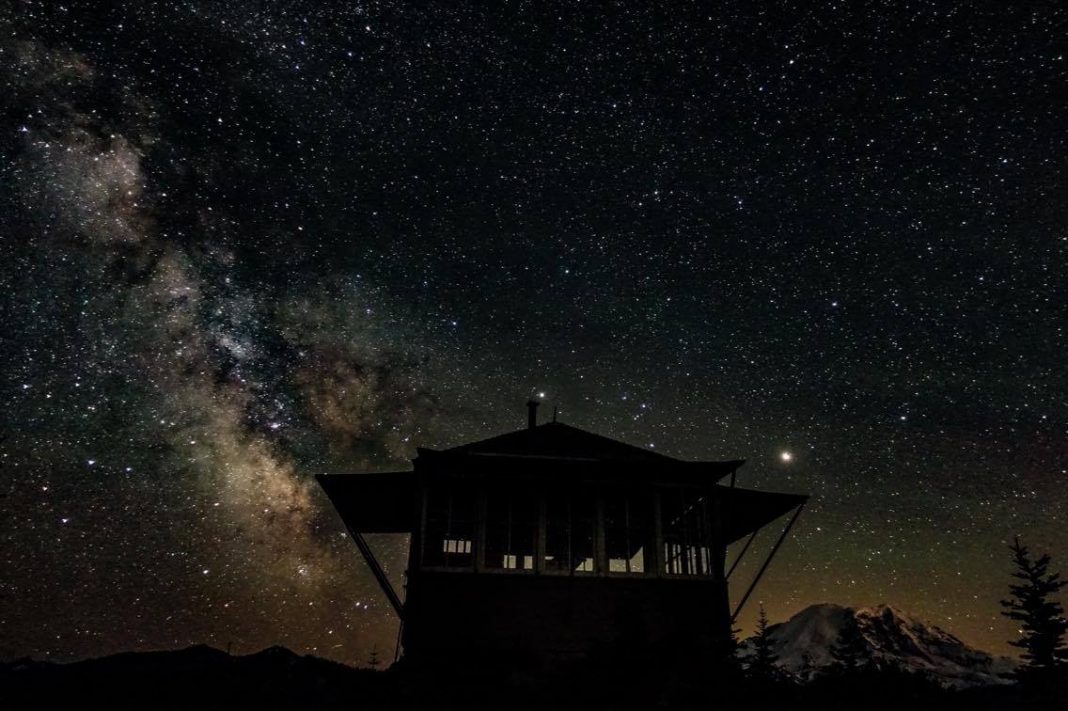For as long as humanity has been around, the night sky has played an important part in our lives. From helping us navigate, to inspiring stories and our imagination, space continues to be the final frontier.
Today, the bright lights of Tacoma and cities around the south Puget Sound pollute the sky, making stargazing next to impossible at our homes. Luckily, we live in an area full of wilderness, mountains and opportunities to get out of town and stargaze in the most beautiful destinations on the planet. Sometimes it’s hard to get a good view of the sky from the city, but with so many rural areas surrounding Tacoma, good vantage points are just a short drive away.
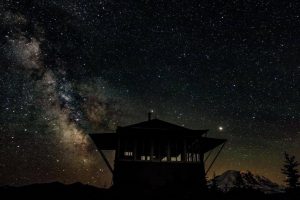
Amateur astronomer and photographer Jeff Knesebeck of The Outdoor Society is one of a handful of dedicated stargazers who consistently monitors the weather and heads up to the mountains every chance they get, hoping to experience the glory and majesty of the night sky.
“I’ve always loved watching stars. Mostly because it’s always done from my favorite places to be, the mountains.” Jeff explained. “Chasing stars and astrological events is challenging and rewarding! It’s especially great when the experience is shared with others.”
While some of the nearby hills close to the Interstate 5 corridor offer decent stargazing, those looking to see the sights of the Milky Way in full glory will need to head toward Mount Rainier, where civilization fades away, giving access to the darkness of night in the wilderness. Mount Rainier is awesome because the high elevations help give cleaner views of the night sky, thanks to thinner air and less light pollution.
Jeff recommends a few of his favorite areas to stargaze around Mount Rainier. One of the places he can be found on clear nights is up at Suntop Lookout off SR410 near Mount Rainier. Lookouts, according to Jeff, are awesome for astronomy because they are typically isolated and offer panoramic views. Suntop is a great destination because you can drive up quickly, giving quick hikers access when stunning solar events are happening.
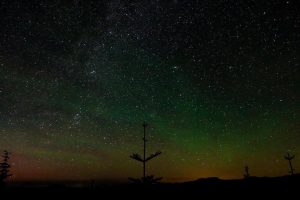
The Sunrise parking lot is also a favorite, thanks to the complete lack of light pollution anywhere around. Sunrise is extremely easy to access when it is open and can make for a fantastic family-friendly destination during the summer months. Mount Rainier’s Paradise region is also pretty spectacular for stargazing, but the trees and mountain will obstruct some of the more sweeping views of the Milky Way.
“One of my other favorite areas is Sunrise Point,” continued Jeff. “It has an excellent view during early summer of the Milky Way directly over Mount Rainier. Mainly the key to good astro-viewing is darkness. Remember to get as far away from city lights as possible.”
Before you get too eager and just jump in your car for some stargazing, make sure you follow these tips and bring the right gear.
To start, getting an app for your phone to help identify what you are looking at is incredibly important. Generations ago, nearly everyone knew the night sky and could read it as a map. Today, we are not nearly as skilled. One great free app to put on your phone to help learn which stars and constellations are which is the Star Chart App, available for both iPhones and Androids. SkyView Free is also a fantastic app for iPhones that will not just show stars and constellations but will also help you find satellites cycling the earth. The app is good to use before you look at the stars but goes against our next tip.
Looking at any light can make stargazing much more difficult. Even the light from your phone can make your eyes less likely to see deeper into the universe. Your best bet for the best stargazing is to avoid all light altogether for 5-10 minutes and then look at the stars. This means no phones, flashlights, car lights or even illuminating watches. You want your eyes to see the night sky in full glory, and even one quick flash of light can take up to 10 minutes to reverse. The moon will also have an adverse effect on how well you can see the heavens above; so before you go, look at a moon chart and pick a night with a new moon. This will give you the best chance to see all the stars visible in our corner of the world.
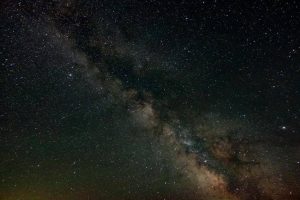
One of the most-popular stargazing activities is watching meteor showers overhead. While news media will report amazing numbers of meteors crossing the sky during peak hours, the numbers they use are based on places with zero light pollution. Heading up to places on Mount Rainier will help you see the glory of a meteor shower.
Once your eyes have adjusted, try to remember any schooling you received about constellations and planets. The most commonly recognized (and most important) constellation is the Big Dipper, which helps stargazers locate the north star. Other easily recognizable constellations are Orion and the rotating “W” of Cassiopeia. Planets can easily be seen once you know what to look for, with Venus, Jupiter and Mars being the most recognized. Using your apps and studying the night sky will turn a glance upward into a new view of the universe above — and around — us.

















